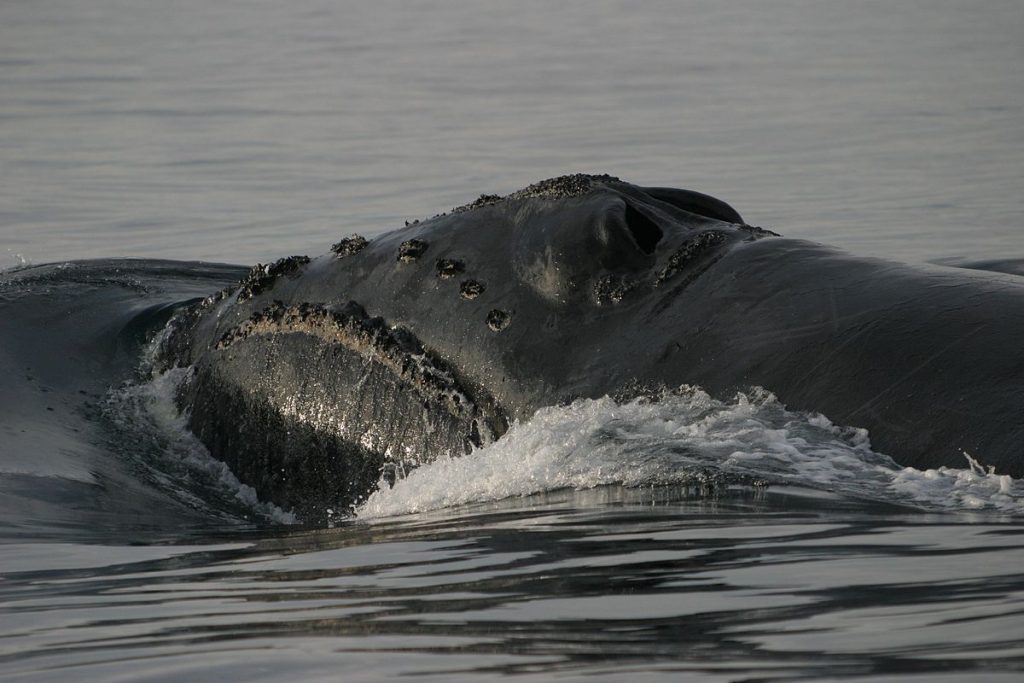
STATUS
Federal status: Endangered
POPULATION TREND
(?) Unknown
RESTORATION
Difficult
FAMILY
Balaenidae
RANGE
Temperate and sub-arctic waters between 20-60 degrees latitude, primarily in the Bering Sea and Gulf of Alaska, though previously ranged south to California and Baja
Appearance
The North Pacific right whale is a large whale that may reach 15-20 meters in length. It can be distinguished from other northern whale species by its lack of dorsal fin, the large black bumps around the head and lips, and an arched jawline.
Habitat & Behavior
Habitat preferences vary seasonally; during calving season, mothers seek out shallow, protected bays to raise their calves. They are sometimes found near shores, but usually seek out colder, deeper waters.
Threats
The North Pacific right whales are the rarest of all large whale species, with an estimate of 100 individuals worldwide. Due to this small population size, and the consequent difficulty of finding mating partners over their extensive range, the species is threatened by inbreeding. They are also significantly impacted by warming oceans and pollution. Ship collisions and oil spills also endanger this species. In addition to these ongoing threats, whaling in the 19th century was a major cause of the North Pacific right whale’s endangered status.
Conservation
North Pacific right whales are so rare that it is difficult to find and study them in order to develop necessary conservation methods. However, this species has been under protection by federal law since the 1980s, and their habitats are protected as well in order to attempt to conserve their population levels. You can learn more about North Pacific right whale conservation efforts at the Center for Biological Diversity.
Where can you spot it?
North Pacific right whales are extremely rare and difficult to observe.